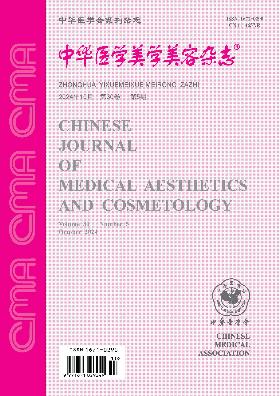Establishment of electron beam computed tomography and rapid prototyping techniques for a cranial bone defect model in goat
引用次数: 0
Abstract
Objective To establish a cranial bone defect model of goat and to study application in craniomaxillo-facial surgery. Methods Electron beam computed tomography (EBCT) scanner was used to scan goat` heads and faces in series and thin layers. Data of EBCT were input in workstation from digital inlet, and then to three-dimensional reconstruction with method of surface shadow. After final data were transformed to the files, the rapid prototyping machine was able to identify and establish the 3D model. Results The EBCT continuous thin-layer (1 mm) scanning data were passed to wave filter, falling coarse, distinguishing and collecting the outline, 3D-reconstruction, curved surface reconstruction with CAD and the substance reconstruction. The final data were input into the laser rapid prototyping machine. Three-dimensional bionic cranium models were fabricated by machine in layer by layer manufacturing principle. Conclusions Establishment of the cranial bone defect model in the goat is very useful to the three-dimensional measurement, individualized reconstruction and basic and clinical research for the cranial bone defect. Key words: Goat; Cranial bone defect; Electron beam computed tomography; Rapid prototyping; Three-dimensional model山羊颅骨缺损电子束计算机断层扫描及快速成型技术的建立
目的建立山羊颅骨缺损模型,探讨其在颅颌面外科手术中的应用。方法采用电子束计算机断层扫描(EBCT)对山羊头部和面部进行串联和薄层扫描。从数字入口将EBCT数据输入工作站,然后用表面阴影法进行三维重建。在将最终数据转换成文件后,快速成型机就可以识别并建立三维模型。结果EBCT连续薄层(1 mm)扫描数据经过滤波、降粗、轮廓识别、采集、三维重建、CAD曲面重建、物质重建。最后的数据输入到激光快速成型机中。采用逐层制造原理,在机械上制作三维仿生头盖骨模型。结论山羊颅骨缺损模型的建立对颅骨缺损的三维测量、个体化重建以及基础和临床研究具有重要意义。关键词:山羊;颅骨缺损;电子束计算机断层扫描;快速成型;三维模型
本文章由计算机程序翻译,如有差异,请以英文原文为准。
求助全文
约1分钟内获得全文
求助全文
来源期刊
自引率
0.00%
发文量
4641
期刊介绍:
"Chinese Journal of Medical Aesthetics and Cosmetology" is a high-end academic journal focusing on the basic theoretical research and clinical application of medical aesthetics and cosmetology. In March 2002, it was included in the statistical source journals of Chinese scientific and technological papers of the Ministry of Science and Technology, and has been included in the full-text retrieval system of "China Journal Network", "Chinese Academic Journals (CD-ROM Edition)" and "China Academic Journals Comprehensive Evaluation Database". Publishes research and applications in cosmetic surgery, cosmetic dermatology, cosmetic dentistry, cosmetic internal medicine, physical cosmetology, drug cosmetology, traditional Chinese medicine cosmetology and beauty care. Columns include: clinical treatises, experimental research, medical aesthetics, experience summaries, case reports, technological innovations, reviews, lectures, etc.

 求助内容:
求助内容: 应助结果提醒方式:
应助结果提醒方式:


